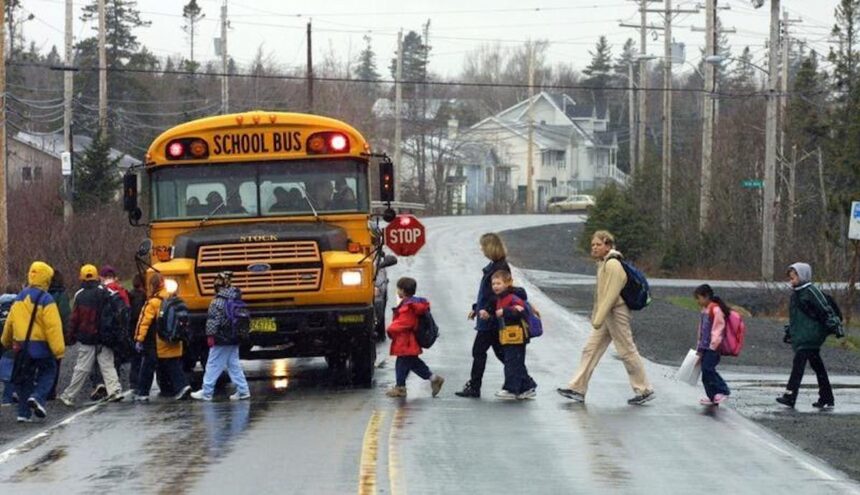Article contentIn 2021, the government purchased 47 modular classrooms for five schools in HRM. Two years later, HRCE had to install modular classrooms at West Bedford School and West Bedford High School, which are on the same property in separate buildings, the year the schools opened. A large 12-classroom modular unit was installed for the high school.Article contentHRCE executive director Steve Gallagher told the committee that two modular buildings — at Hammonds Plains Consolidated Elementary and Astral Drive in Dartmouth — were added before this school year, replacing portable units “that had reached the end of life.”Article content Kids load onto a school bus in Halifax in 2018. Photo by Tim Krochak /The Chronicle HeraldArticle contentBarbrick said the education department has essentially moved away from portables.Article content“Since 2021, a new portable has not been put in place. Portables are an older approach before modulars existed,” she told the committee.Article contentArticle content“As we move to modulars, which are more of an annex design that is intended to augment the primary school space, and those are anywhere from four to 12 classrooms. They have washrooms, running water and HVAC systems, and are really an additional capacity for the school.Article content“The use of modulars has been intended to augment the square footage that we have to solve our immediate problem while we build another 25 schools, with the ones that have opened already and the 19 that are in various states of development now. (Modulars) are solving short-term problems.”Article contentWith a slate of new school projects in the hopper and as the province’s population growth decelerates, the need for portables and modular classrooms will likely dissipate over time.Article contentAccording to the HRCE, enrolment increased by more than 11,000 students in the last eight years. But Gallagher told the committee enrollment numbers were lower than projected this year.Article contentArticle content“In Halifax, we’ve seen a significant change this year,” Gallagher said. “We were projected to have about 1,500 additional students, and we got just under 500.Article content“Our projections had indicated that we would grow by another 16,000 students by 2034. But clearly those projections need to be revised. We’re expecting new data at some point in the winter, we’ll analyze that, and I suspect that those projections are going to come dramatically down, based on this year.”Article contentIn the meantime, portables and modulars will remain in use.Article contentMichel Collette, superintendent of the Conseil scolaire acadien provincial, Nova Scotia’s francophone school board, said one CSAP school has modulars.Article contentDoes it make a difference?Article contentWozney wondered if being taught in an annex has had any effects on students.Article content“I can’t give you a definitive answer in terms of whether we’re seeing an impact in terms of learning. We’re collecting anecdotal evidence from families and primarily from staff,” Gallagher said. “Teachers and students much prefer modulars to portables. The portable is an older solution to a problem of temporary growth and we are moving rapidly to retire those.Article content“I think it’s clear, at least from anecdotal reporting, that an annex facility with washrooms, staff room, central hallway, creates a better learning environment than the portable. But it doesn’t really matter what building you’re in. It’s all about the teacher. And I’m sure you would agree with me that a dynamic teacher can lead students to success in virtually any environment.”Article content
Portables, modular classrooms a short-term fix for overcrowded Nova Scotia schools











